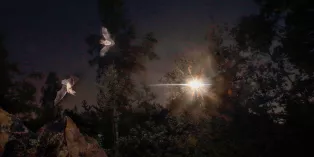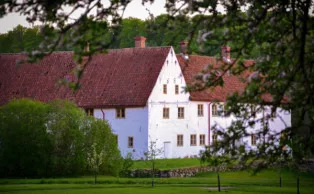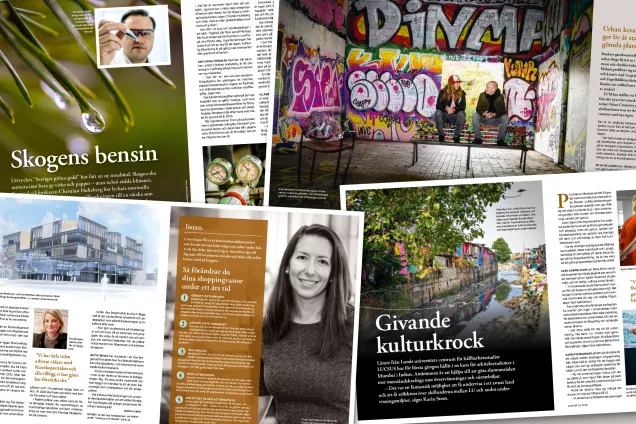During the day they are not visible. But at dusk, brown long-eared bats, pond bats and greater mouse-eared bats spread their wings and start hunting. LUM accompanied researcher and bat expert Jens Rydell to Hovdala castle for a bat inventory.
The bat detector crackles and emits a rhythmic, clicking sound.
“That was a soprano pipistrelle, one of the smallest species of bat”, says Jens Rydell, researcher at the Ecology Building in Lund.
He holds the detector in his hand and scans the night sky where black silhouettes flutter over our heads. Since 2016, Jens Rydell has been conducting a LONA project (local nature conservation effort) at Hovdala castle outside Hässleholm. The project includes an inventory of the bat species present there.
“Hovdala castle is a paradise for bats; almost all of Sweden’s nineteen different bat species are represented here. We want to find out
exactly which ones and above all develop a plan for ensuring that they will still be here in the future”, says Jens.
In this open cultural landscape of Skåne, with streams and shallow lakes nearby, there are plenty of mosquitoes, dragonflies and other insects that the bats can catch throughout the summer. There are hollow trees, damp cellars and other dens where the bats can rest during the day.
“Of course there is no better home for bats than an old castle”, says Jens shrewdly.
There is another advantage to Hovdala castle. The dark. That is the bats’ protection against birds of prey. As the bats use echolocation (sonar)* they do not need any light to find their prey. If there is one thing bats detest, it is artificial light. When Jens Rydell came to Hovdala, there were plans to set up lighting on the castle’s facade, but in the end the opposite approach prevailed. There is still some lighting around the castle, but hopefully this will also be removed. Instead, the castle is now promoting itself as a place where visitors can look at the stars and bats.
“At night, the bats are not afraid of anything. That’s when they are kings”, says Jens.
Relying on echolocation has major advantages, but there are also drawbacks. Echolocation does not allow the bats to discover objects at a great distance. And definitely not a rotorblade on a wind turbine slicing the air at high speed (it can resemble an attacking bird of prey). Their brains are simply not adapted to deal with it.
Although accidents are rare, the wind turbines constitute a threat to the bats. More bats than birds die every year because of wind turbines.
In recent years, Jens Rydell has produced expertise on where it is unsuitable to locate wind turbines. He has also given recommendations for how the wind energy industry can adapt its operations to avoid accidents with bats. Wind turbines located in bat-rich areas are switched off during still, warm, late summer nights, when the risk is highest.
In his forthcoming research, Jens wants to find out in detail which insects and animals are to be found around the top of a wind turbine. But finding out is not an easy task. In order to succeed, he has started a collaboration with the Department of Physics in Lund. The physicists have developed a laser detector, or lidar, which can be used to find and identify flying insects and bats at a distance.
“It’s amazing”, says Jens.
The plan is to aim the laser light straight up in the air next to a wind turbine and to try and understand what insects and bats are actually doing up there and why they are there.
“When you want to solve a problem, it helps to understand what you’re dealing with”, says Jens.
*The physicists with whom Jens is collaborating are Mikkel Brydegård and his two doctoral students. Also Susanne Åkesson at the Ecology Building.
JOHAN NYMAN





